
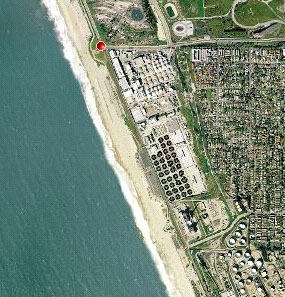 |
Directions From Cal. State Northridge
|
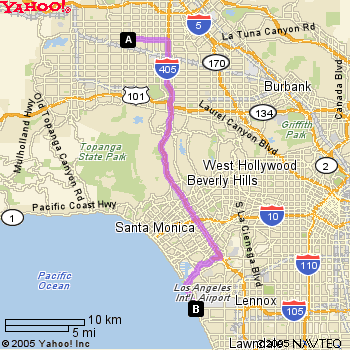 |
Hyperion Wastewater Treatment Plant |
||
| Author(s): Jen Klipfel | Field Trip -
Teacher's Guide SED 695B; Fall 2005 |
|
 |
|||
|
Topics addressed
|
Description of Field Trip Hyperion is the largest wastewater treatment facility in Los Angeles. Reservations can be made at Hyperion for a full tour which takes about 2 hours. There are two components to the tour, an initial question and answer period with a 15 minute video of the plant operations, and then a tram tour of the facility with periodic stops for participants to exit the tram and witness the working plant first hand. The tour is very detailed, it offers great insight into primary and secondary treatment, as well as biosolid treatment, the history of waste treatment generally and at Hyperion, and their continued pursuit to keep the air and effluent as clean as possible for their neighbors in El Segundo and the Santa Monica Bay. My only complaint, though it was completely expected, was the clear bias of the presenter, discussing their great environmental record, and praising all the benefits Hyperion delivers to the greater community, without serious discussion of the environmental hazards of all that treated effluent being discharged into the bay, and the issues surrounding the use of treated biosolids as fertilizer in Kern County.
FYI for tour planners:
|
Standards:High School Health Standard 5 The student will understand and demonstrate how to
|
Study Guide Click here to download a word document for this study guide. One of your first activities will be to watch a movie: As you watch, answer the following questions: 1.What is the job of the Headworks?
2.After Headworks, the wastewater begins primary treatment. What is added to the wastewater to help suspended solids to settle to the bottom?
3. What is skimmed off the top during this stage?
4. What is used to remove the organic material still left in the wastewater at this point?
5. What is pumped into these tanks to optimize this decomposition?
6.What percentage of the wastewater at this point is pumped out the 5 mile pipe into the Santa Monica Bay?
7. There is 3 million gallons of wet solids or sludge collected from the tanks, where is this biosolid material sent?
8. What type of bacteria live in the digesters? Anaerobic or aerobic? What is the difference?
9.What gas is produced in this process and what is it used for?
10. What is the job of the huge centrifuges?
11. After being centrifuged, where is the final destination for the treated biosolids?
12.What do the air scrubbers do and why are they important?
Your second part of the field trip will be to take a tram ride through the plant and you will stop at a few different areas. Below write down the places you stopped and one interesting thing you saw or learned by being there up close. You may not make all the stops, so comment on the places you do stop. Stop #1: Stop #2 Stop #3 Stop #4 |
Either during the field trip or afterwards, find the answer to the following questions. There will be a question and answer period at the beginning and end to ask your guide. Don't be shy and take advantage of his/her knowledge. 1. How hot do the digesters get?
3.How many gallons of waste is received on an average day at Hyperion?
4. How long does it take the waste to reach the plant?
5. What does the West Basin Water Reclamation Plant do with the water sent to them?
6.When was the Clean Water Act and what did it mandate for treatment facilities like Hyperion?
7. What does it cost per year to run Hyperion?
8. How long does it take wastewater to complete its trip through Hyperion?
|
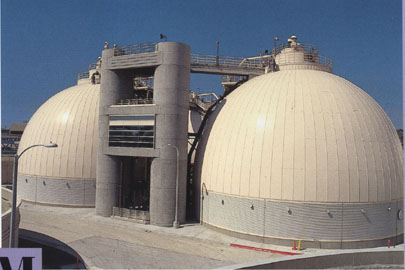 |
What is this a picture of? | ||
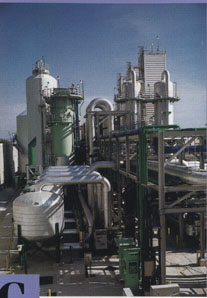 |
This is the cryogenic facility at Hyperion. What is produced here? | ||
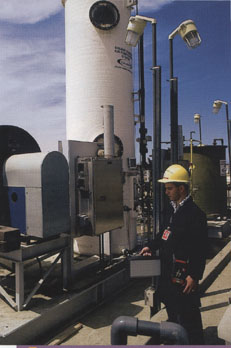 |
Air scrubbers are key to the health and quality of life of the neighborhoods surrounding Hyperion. What percent of problematic air emissions have they reduced since being introduced at the facility? | ||
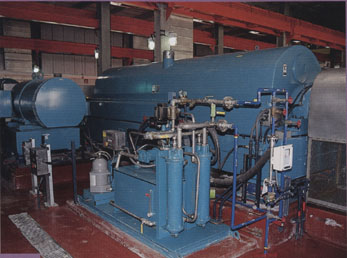 |
This is a picture of one of the dewatering centrifuges at Hyperion. Why does it lower transportation costs to send the wet biosolids through a centrifuge that takes out 25% of the excess water? | ||
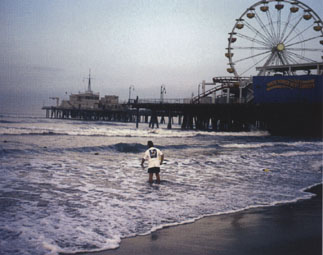 |
Extra credit: Contact an environmental group connected with the preservation of the Santa Monica Bay, or that advocates for a cleaner environment, and get some information to balance out the one sided view we heard from Hyperion. What are their concerns with the products produced at plants like Hyperion, the effluent, and biosolids, and discharge into the air? What steps are they taking to improve the situation? |
||
References & Links: Below is an overview website discussing the plant in general This site has a great schematic of the entire plant, broken into each stage of wastewater treatment. Below is the website of Heal the Bay, an environmental group actively involved in preserving the Santa Monica Bay Sierra Club's Home Page. You can do a search for some information on their stance on wastewater effluent.
|
|||